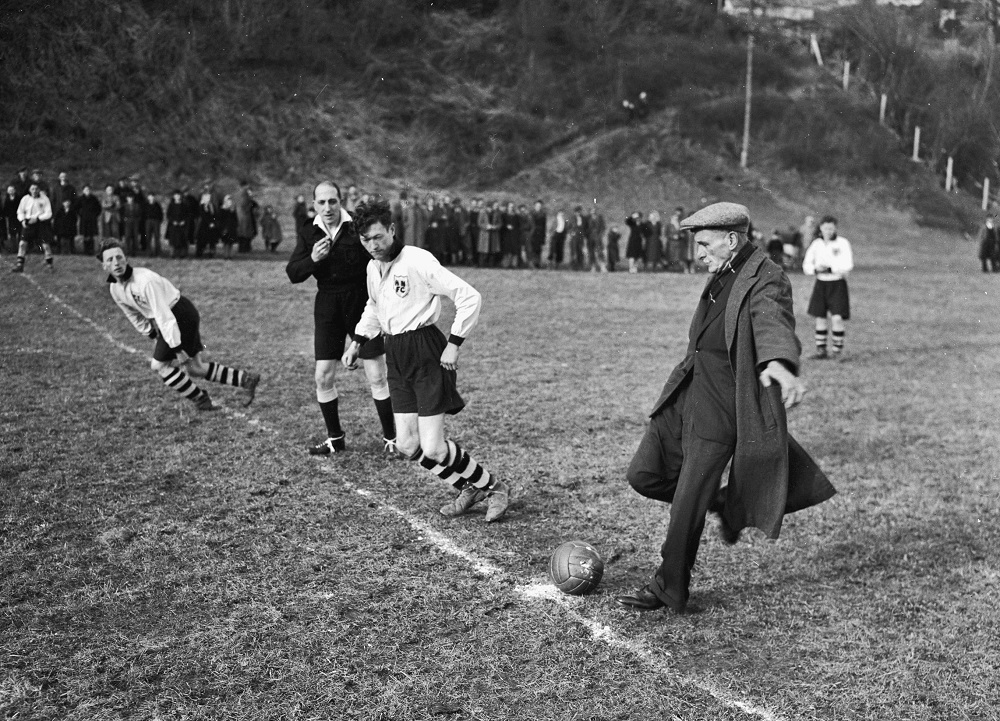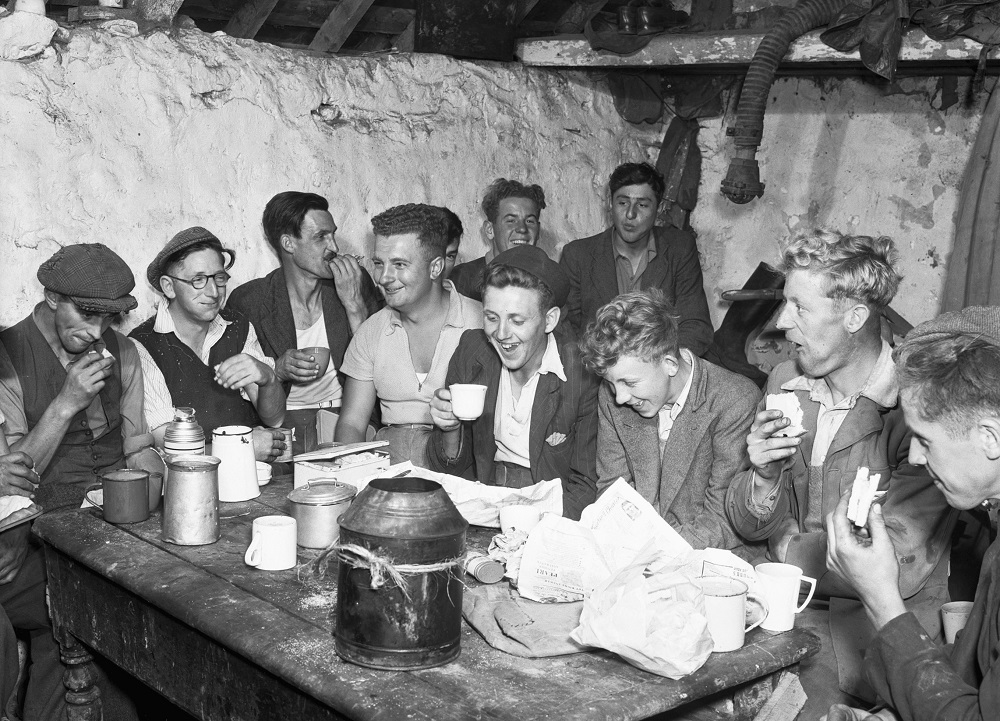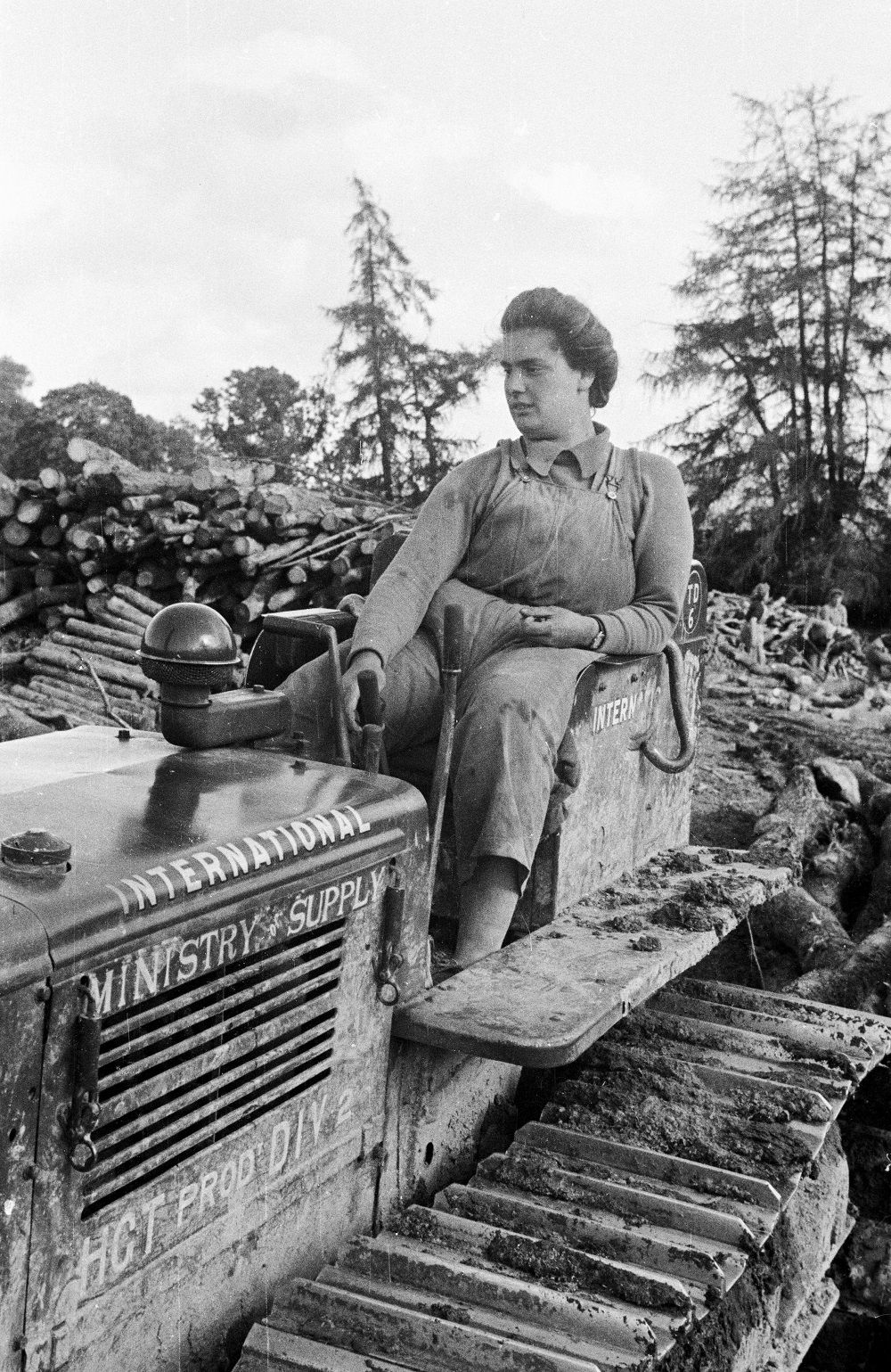Review: Geoff Charles – Wales and the Borders offers an illuminating portal into the past

Jon Gower
The great French photographer Henri Cartier-Bresson argued that ‘Photographers deal in things which are continually vanishing and when they have vanished there is no contrivance on earth which can make them come back again.’ And yet, photographs in a sense do bring things back again, resurrecting moments, as this fine volume about the Welsh photographer Geoff Charles amply demonstrates.
So, captured in the days before cameras had auto-focus, we see the ebullient faces of twelve potato farm labourers on Gower as they eagerly tuck into a communal supper or the opening of what was apparently the first cattle grid in Britain on the Berwyn mountain road between Bala and Llangynog in 1952.

But as the book’s sub-title intimates Charles also chronicled people and ways of life that were on the cusp of disappearing. He documents industrial workers in Merthyr Tydfil playing the game of quoits as it enjoyed a revival in the early 1950s and coracle men on the Teifi quietly predicting the end of a 2000 year long tradition of river fishing. He captures the changing nature of agriculture, especially in rural Montgomeryshire, from the mobilising of women in the Land Army during the Second World War through mass ploughing schemes designed to bring unfarmed land into production to the Royal Welsh Show taking up a permanent home in Llanelwedd.

There are some striking portraits assembled herein, from tramps to thatchers, blacksmiths to expert hedge-layers. One of these is Lettice Rees, the so-called queen of the female cocklewomen of Llansaint, near Kidwelly, shown riding her donkey into the pages of the book. Charles’ portrait of her, taken in 1962 shows this redoubtable woman at the age of 74 taking her littoral harvest to be processed in Penclawdd on the southern shore of the Lougher estuary. This was in itself a big change for someone who had started off selling her cockles door to door during a working life of no fewer than 62 years, which of course meant she embarked on this back-breaking labour when she was twelve.
Poignant
Born in Brymbo Geoff Charles studied to be a journalist at King’s College in London before working on a string of publications including the South Wales Evening Express, the Western Mail and the Warrington Express, but it was his time on Y Cymro that proved to be the most fortunate. He was there in the paper’s post-war heyday, when its circulation rose to 26,000 and money came flowing in: rationing of newsprint meant that large companies often chose to advertise their wares in local or regional newspapers. He was also working there when the paper’s fortunes changed with the advent of TV, although he did himself turn his hand to movie-making for a brief while – in ‘The Heritage’ documenting the life of an evacuee in the village of Llangybi while also chronicling life in the materially poor but culturally rich Connemara village of An Spidéal.
Working for Y Cymro naturally meant that Charles had a very long relationship with the Eisteddfod, which eventually welcomed him into the Gorsedd of Bards under the bardic name ‘Sieffre o Brymbo.’ He was present at pretty much every Eisteddfod from 1937 to 1975 and this aspect of his work alone makes for a fascinating archive, from the American singer Paul Robeson’s address in Ebbw Vale in 1960 to an image of a competition which could only have happened in a coal mining area, one for splicing an iron rope from individual strands of metal held at the Aberdare National Eisteddfod in 1956.
Geoff Charles often had luck on his side when it came to being in the right place at the right time, although he might not have wished to be be a witness to some of the more tragic events he captured through his lens. He was one of the first on the scene at the Gresford mining disaster in September 1934 and had his camera to hand when he witnessed a high speed crash, and indeed the worst disaster in the history of motor racing at the Le Mans circuit in 1955. Closer to home he captured the astonishing sight of the Britannia bridge on fire in 1970, thus capturing the image of what was, after all, an iron bridge strafing down a hail of burning shards into the Menai Straits below. And of course he chronicled the history of the drowning of the farming community at Capel Celyn to create the Tryweryn reservoir, with the slow, poignant emptying of the valley and the attedant protest marches through Liverpool, with Gwynfor Evans at the head of what was to be a futile demonstration.

The late Ioan Roberts – sadly the journalist and author passed away at the end of 2019 – had written three previous works about Geoff Charles and this one acts as a useful and very accessible digest of them all. It is fitting that a fellow journalist should act as celebrant for Charles’ work for here was a man who had the same innate need to tell stories and explore the world. Geoff Charles believed that the best photograph he took was that of the poet Carneddog and his wife Catrin standing outside Carneddi, their remote mountain home and said in an interview that ‘There’s something in its that touches the heart. I realise that it’s sentimental but there’s something about it that goes right to the core of human existence.’
Charles was no sentimentalist but the image of the ancient couple looking over the distant hills, or perhaps towards the end of days, their cheeks hollowed out by time, certainly tugs at the heartstrings. In keeping with many of the enduring images in Ioan Roberts’ book it is one well worth returning to, as a camera’s capturing of light offers a bright, illuminating portal into the past.
Geoff Charles: Wales and the Borders – Photographs of a lost way of life, 1930s-1970s by Ioan Roberts is published by Y Lolfa costs £14.99 and can be bought here.
Support our Nation today
For the price of a cup of coffee a month you can help us create an independent, not-for-profit, national news service for the people of Wales, by the people of Wales.





